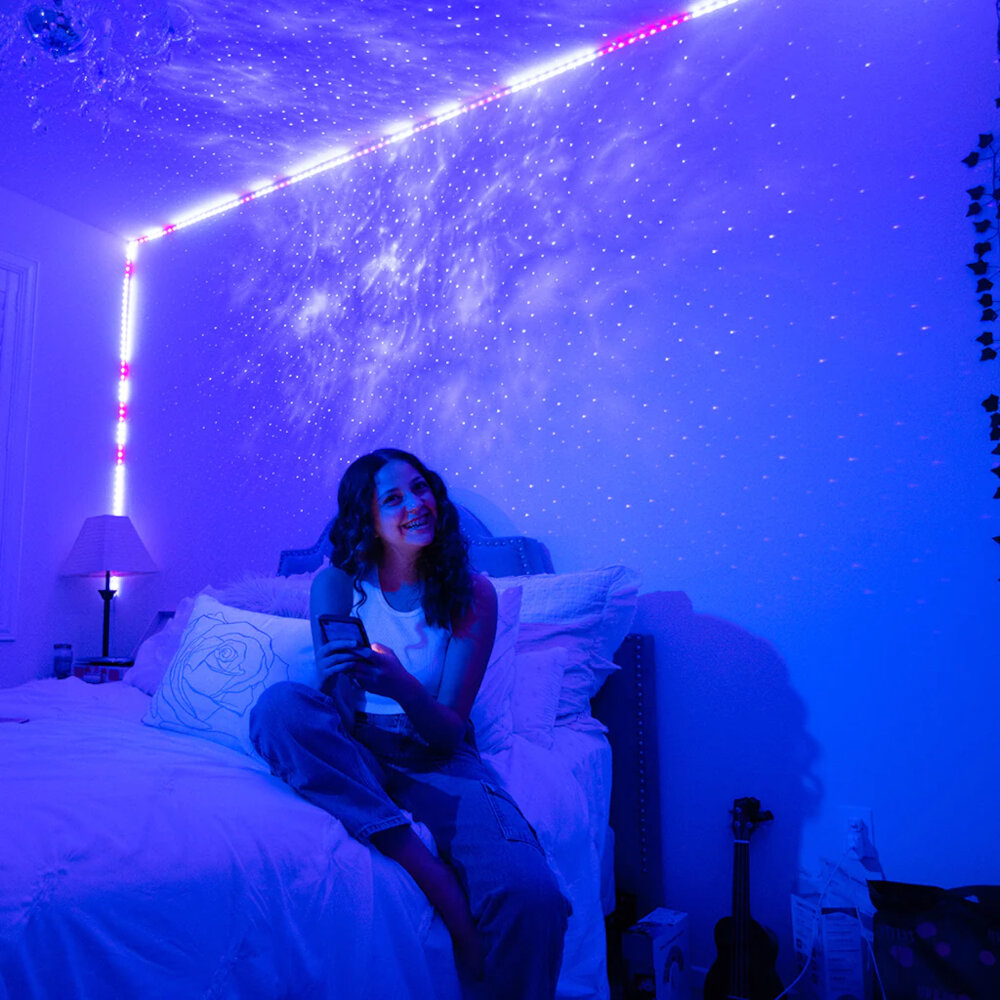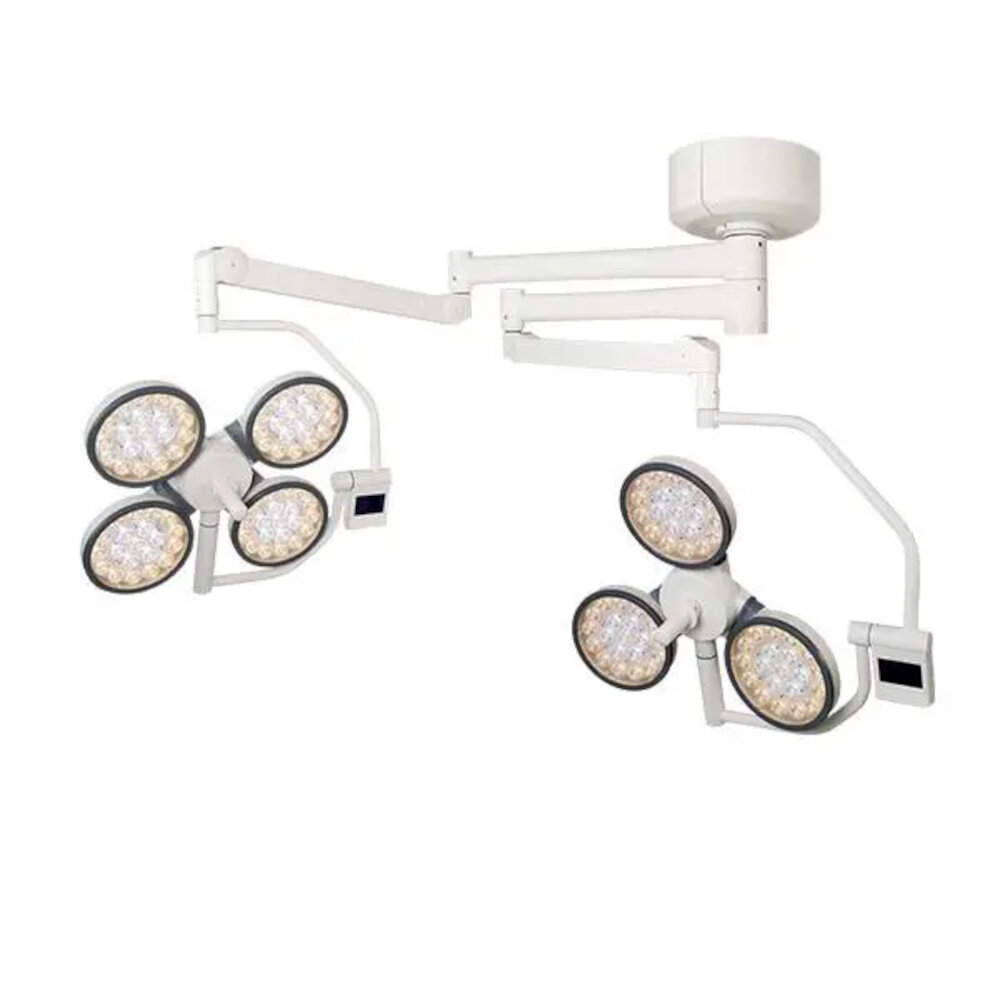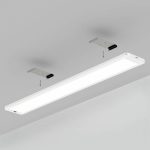How Many Watts Does an LED Light Bulb Use? A Comprehensive Guide

In the modern era of energy conservation and sustainability, LED light bulbs have become a popular choice for lighting solutions. They are energy-efficient, long-lasting, and eco-friendly. However, there is a common misconception that LED bulbs use less power than their traditional counterparts. This is not entirely true. While LED bulbs consume less energy, they produce the same amount of light as incandescent bulbs, making it essential to know how many watts an LED light bulb uses. This comprehensive guide aims to provide a detailed answer to the question, \How many watts does an LED light bulb use?\ It will explore the factors that affect LED bulb wattage, such as brightness, color temperature, and dimming capabilities. Additionally, the guide will compare LED bulb wattage with other types of bulbs, such as incandescent, halogen, and fluorescent, to help you make an informed decision when choosing the right bulb for your lighting needs. Whether you are an avid environmentalist looking to reduce your carbon footprint or a budget-conscious homeowner looking to cut down on energy bills, this guide will provide you with all the information you need to know about LED bulb wattage.
Understanding LED Light Bulbs

LED light bulbs have become increasingly popular in recent years, and for good reason. Not only are they energy-efficient, but they also last significantly longer than traditional incandescent bulbs. The term \LED\ stands for \light-emitting diode,\ and these bulbs use a semiconductor to convert electricity into light. Unlike incandescent bulbs, which produce light by heating a filament, LEDs produce very little heat and are much more efficient at converting energy into light. This means that LED bulbs use significantly less energy than incandescent bulbs, making them a great choice for anyone looking to save money on their energy bill while also reducing their carbon footprint. When it comes to understanding LED light bulbs, one of the most important things to consider is the wattage. In the past, we used wattage to determine the brightness of a bulb, but with LED bulbs, this is no longer the case. Instead, we use lumens to measure brightness. The wattage of an LED bulb refers to the amount of energy it uses, rather than the amount of light it produces. This means that a 60-watt LED bulb may produce the same amount of light as a 100-watt incandescent bulb, but it will use significantly less energy to do so. It’s important to keep this in mind when shopping for LED bulbs, as you’ll want to choose bulbs with the appropriate lumens for the space you’re lighting, rather than simply choosing the highest wattage available.
LED light bulbs are energy-efficient lighting solutions that have gained immense popularity in recent years. LED stands for Light Emitting Diodes, and these bulbs use semiconductors to convert electrical energy into light. Unlike traditional incandescent bulbs that produce light by heating a filament, LED bulbs produce light by passing an electric current through a semiconductor material. LED bulbs are available in different shapes, sizes, and colors, and they consume significantly less energy than incandescent bulbs, making them an ideal choice for homes, offices, and outdoor spaces. LED bulbs also have a longer lifespan and emit less heat, making them a safer and more environmentally friendly lighting option.
LED (light-emitting diode) light bulbs work by converting electrical energy into light. Inside an LED bulb, there is a semiconductor material that emits light when an electric current passes through it. The semiconductor material is made up of positive and negative layers, and when the current passes through, it causes the electrons to move from the negative layer to the positive layer. This movement of electrons creates energy, which is released in the form of light. The color of the light emitted by an LED bulb is determined by the materials used in the semiconductor layers. LED bulbs are energy-efficient, long-lasting, and eco-friendly, making them a popular choice for lighting homes and businesses.
LED light bulbs have numerous advantages over traditional incandescent bulbs. Firstly, they are highly energy-efficient, consuming up to 80% less energy than incandescent bulbs, which results in significant cost savings on electricity bills. Secondly, they have a longer lifespan, lasting up to 25 times longer than incandescent bulbs, which reduces the need for frequent replacements. LED bulbs are also more durable and resistant to shock and vibration, making them ideal for outdoor and industrial settings. Additionally, LED bulbs emit very little heat, which reduces the risk of fire and makes them safer to handle. Lastly, LED bulbs are much more environmentally friendly, as they do not contain harmful substances such as mercury, which is often found in incandescent bulbs. Overall, LED bulbs are a smart choice for anyone looking to save money, energy, and reduce their environmental impact.
Calculating the Wattage of an LED Light Bulb

LED light bulbs are becoming increasingly popular due to their energy efficiency and long lifespan. However, it’s important to understand how to calculate their wattage to ensure that you’re getting the right amount of light for your needs. To calculate the wattage of an LED light bulb, you need to know its lumens and efficiency rating. Lumens are a measure of the amount of light emitted by the bulb, while efficiency rating refers to how well the bulb converts energy into light. Once you have these two pieces of information, you can use the following formula to calculate the wattage of the LED light bulb: Wattage = Lumens x Efficiency Rating / 100. For example, if an LED light bulb has a brightness of 800 lumens and an efficiency rating of 80%, the wattage would be calculated as follows: Wattage = 800 x 80 / 100 = 640/100 = 6.4 watts. It’s important to note that the wattage of an LED light bulb is not the same as its brightness. A higher wattage does not necessarily mean a brighter light, as the efficiency rating also plays a significant role in determining the bulb’s brightness. In conclusion, calculating the wattage of an LED light bulb is an essential step in choosing the right bulb for your lighting needs. By understanding the relationship between lumens and efficiency rating, you can determine the wattage required to achieve your desired level of brightness. Furthermore, choosing LED light bulbs can help you save money on your energy bills while also reducing your carbon footprint, making it a win-win solution for both your wallet and the environment.
Wattage is a measure of the amount of power a device uses, and it is an essential aspect to understand when selecting an LED light bulb. The wattage of an LED bulb determines how much energy it consumes, and consequently, the amount of light it produces. Typically, LED bulbs consume less wattage than traditional incandescent bulbs, which means they generate the same amount of light while consuming less power. Therefore, when purchasing LED bulbs, it is crucial to consider the wattage to ensure you get the right amount of light output while minimizing energy consumption. Understanding wattage is a key factor in making informed decisions when choosing the right LED light bulbs for your home or workplace.
There are several factors that can affect the wattage consumption of an LED light bulb. Firstly, the brightness or lumens output of the bulb is a key determinant. A higher lumen output requires a higher wattage to power the bulb. Secondly, the color temperature of the bulb can also affect wattage consumption. Warmer colors typically require less wattage than cooler colors. Thirdly, the design of the LED bulb can also play a role in wattage consumption. More efficient designs can achieve the same brightness with less wattage. Finally, the quality and age of the bulb can also affect wattage consumption. Older or lower quality bulbs may require more wattage to achieve the same brightness as newer, higher quality bulbs.
Calculating wattage is a crucial step in determining the energy consumption of an LED light bulb. To calculate the wattage of an LED bulb, you need to know the voltage and the amperage it consumes. Voltage is the electrical pressure that moves the current, while amperage is the amount of current flowing through the circuit. To calculate wattage, you need to multiply the voltage with the amperage. This will give you the wattage consumed by the bulb. It is essential to know the wattage of an LED bulb to determine its efficiency and energy cost. A higher wattage bulb consumes more energy and will cost more to operate, while a lower wattage bulb will consume less energy, making it a cost-effective option.
The Energy Efficiency of LED Light Bulbs

LED light bulbs have revolutionized the lighting industry with their energy efficiency and long lifespan. Unlike traditional incandescent bulbs that convert most of their energy into heat, LED bulbs convert almost all of their energy into light, making them much more efficient. In fact, LED bulbs use up to 80% less energy than incandescent bulbs, which means they can help you save a significant amount of money on your electricity bills over time. Moreover, LED bulbs can last up to 25 times longer than incandescent bulbs, which means you won’t need to replace them as often, reducing waste and saving you money in the long run. One of the most significant advantages of LED light bulbs is their ability to produce the same amount of light as incandescent bulbs with much fewer watts. For example, a 60-watt incandescent bulb can be replaced by a 10-watt LED bulb without sacrificing brightness. This means that if you switch to LED bulbs, you can enjoy the same level of brightness while using much less energy. Additionally, LED bulbs are available in a variety of colors and styles, making them a versatile option for any lighting needs. From warm yellow to cool white, LED bulbs can provide the perfect lighting solution for your home or office.
Understanding energy efficiency is crucial in today’s world due to the rising energy demands and the need to reduce greenhouse gas emissions. Energy efficiency is the process of using less energy to perform the same task, without compromising the quality of the output. In the case of LED light bulbs, energy efficiency is achieved by converting most of the electrical energy into light, rather than heat. This means that LED light bulbs consume less electricity and produce less heat compared to traditional incandescent bulbs. By being more energy-efficient, LED bulbs help reduce the overall energy demand, lower electricity bills, and contribute to a more sustainable future.
One way to measure the efficiency of an LED light bulb is to calculate its energy efficiency. This can be done by dividing the bulb’s luminous flux (measured in lumens) by its power consumption (measured in watts). The resulting value is the bulb’s luminous efficacy, which is a measure of how effectively it converts electrical energy into visible light. The higher the luminous efficacy, the more efficient the bulb is at producing light. LED bulbs are known for their high luminous efficacy, which can be up to five times greater than that of traditional incandescent bulbs. By calculating the energy efficiency of an LED bulb, you can determine how much light it produces for the amount of energy it consumes, making it easier to choose the most efficient bulb for your needs.
Energy efficiency has numerous benefits, and the use of LED light bulbs is a prime example. LED bulbs consume less electricity than traditional incandescent bulbs, resulting in lower energy bills and reduced carbon emissions. Additionally, LED bulbs have a longer lifespan, reducing the need for frequent bulb replacements and lowering maintenance costs. The energy-efficient bulbs emit less heat, making them safer to use and reducing the strain on air conditioning systems. The use of LED bulbs also promotes sustainability by conserving natural resources and reducing the demand for power plants, ultimately benefiting both the environment and the economy.
Comparing LED Light Bulbs to Traditional Bulbs

LED light bulbs have emerged as the most energy-efficient and long-lasting lighting option in recent years. Compared to traditional bulbs, they consume significantly less energy and last much longer, which translates into lower electricity bills and reduced carbon footprint. LED bulbs use up to 80% less energy than traditional bulbs, and they can last up to 25 times longer. This means that LED bulbs not only save you money on your energy bills but also reduce the need for frequent bulb replacements. In addition to their energy efficiency, LED bulbs also provide better quality light than traditional bulbs. LED bulbs emit a bright, clear light that is similar to natural daylight, making them ideal for use in homes, offices, and other settings where good lighting is essential. They are also available in a wide range of colors and hues, allowing you to create a customized lighting scheme that suits your needs and preferences. Furthermore, LED bulbs do not emit heat like traditional bulbs, making them a safer and more comfortable lighting option for your home or workplace. Overall, when comparing LED light bulbs to traditional bulbs, it is clear that LED bulbs are the superior choice in terms of energy efficiency, longevity, and quality of light.
When comparing wattage of LED light bulbs, it’s important to understand that wattage is not the only factor that determines the brightness or efficiency of a bulb. LED bulbs use significantly less wattage than traditional incandescent bulbs, with most LED bulbs using only 10-20% of the wattage required by incandescent bulbs to achieve the same level of brightness. This means that a 60-watt LED bulb can produce the same amount of light as a 100-watt incandescent bulb. Additionally, LED bulbs have a longer lifespan and are more energy-efficient overall, making them a cost-effective choice in the long run. It’s important to consider factors like lumens, color temperature, and CRI when comparing LED bulbs, as these factors can have a significant impact on the quality of light produced.
Comparing energy efficiency across different types of light bulbs can be a helpful tool in determining the most cost-effective and environmentally friendly option for your needs. LED light bulbs are typically the most energy-efficient option, using significantly less energy than traditional incandescent bulbs and even compact fluorescent bulbs. In fact, LED bulbs use up to 80% less energy than incandescent bulbs while still producing the same amount of light. Additionally, LED bulbs have a longer lifespan than other types of bulbs, meaning you’ll save money on replacement costs over time. When considering the energy efficiency of different light bulbs, it’s important to compare not just the wattage but also the lumens and lifespan to get a complete picture of each option’s impact on your energy consumption and budget.
When it comes to selecting the perfect LED light bulb, cost comparison is a crucial factor to consider. Although LED bulbs are more expensive than traditional incandescent bulbs, they offer significant savings in the long run due to their energy efficiency and longevity. It is essential to evaluate the total cost of ownership, which includes the purchase price and the cost of energy consumption over the bulb’s lifetime. Selecting a high-quality LED bulb with a higher price tag may be more cost-effective in the long run due to its energy-saving capabilities, lower maintenance costs, and longer lifespan. Therefore, it is necessary to compare LED bulbs’ cost and features to make an informed decision that balances upfront costs with long-term savings.
LED light bulbs have become increasingly popular in recent years, and for good reason. They offer a wide range of benefits that make them a wise choice for both residential and commercial use. One of the most significant advantages of LED light bulbs is their energy efficiency. They use up to 80% less energy than traditional incandescent bulbs, which can result in significant savings on electricity bills. Additionally, LED bulbs last up to 25 times longer than incandescent bulbs, reducing the need for frequent replacements. LED bulbs also emit less heat, making them safer and more comfortable to use. Finally, LED bulbs are available in a variety of colors, making them an excellent choice for creating ambiance and improving the aesthetic appeal of any space. Overall, the benefits of LED light bulbs are numerous, making them a smart choice for anyone looking to improve their lighting while saving energy and money.
In conclusion, wattage and energy efficiency are two important factors to consider when choosing LED light bulbs. While wattage determines the brightness of the bulb, it does not necessarily correlate with energy efficiency. It is important to look for bulbs with a high lumens-to-watts ratio, as these will provide the most brightness for the least amount of energy consumption. Additionally, choosing bulbs with a lower wattage and longer lifespan can save you money in the long run, as you will not have to replace them as frequently. By taking wattage and energy efficiency into consideration, you can make informed decisions and choose the best LED bulbs for your needs.
Conclusion

In conclusion, understanding the wattage of an LED light bulb is crucial when it comes to choosing the right bulb for your needs. LED bulbs are energy-efficient and can help you save money on your electricity bills. The wattage of an LED bulb varies depending on the type of bulb, its brightness, and the purpose it serves. It is important to note that wattage is not the only factor to consider when choosing an LED bulb. Other factors such as lumens, color temperature, and color rendering index are also important. By taking these factors into consideration, you can make an informed decision on which LED bulb is best for you. Overall, LED bulbs are a great investment as they are long-lasting, eco-friendly, and cost-effective.




